Lord Byron, one of England’s best-known poets, was buried in St Mary’s, Hucknall, in 1824. The church is close to this Wetherspoon pub which is named after the famous tree which once stood outside Newstead Abbey, Byron’s ancestral home, near Hucknall. Lord Byron is remembered in several places in the town – a small statue stands in a niche on the old Co-op, in Market Place, and the Byron cinema is named after the poet.
A painting and text about The Pilgrim Oak.
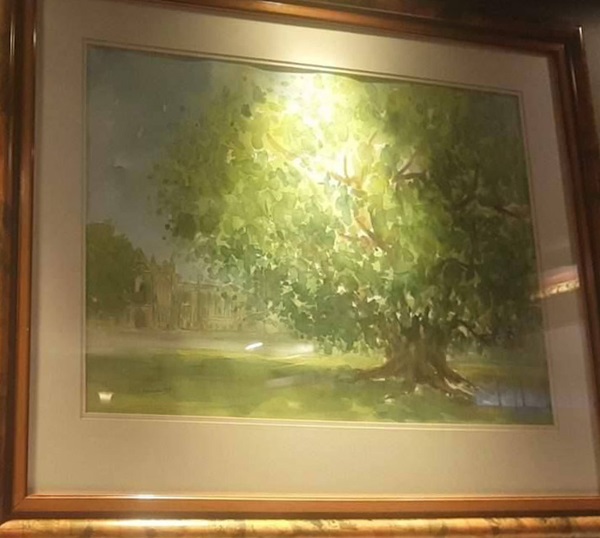
The text reads: Nottinghamshire’s Sherwood Forest, famed for the hiding place of legendary hero Robin Hood, was full of giant oak trees – most famous is the Major Oak. In the background of the painting is depicted Newstead Abbey, ancestral home of the poet Lord Byron who is buried in Hucknall’s parish church.
A print and text about Ada, Lady Byron.
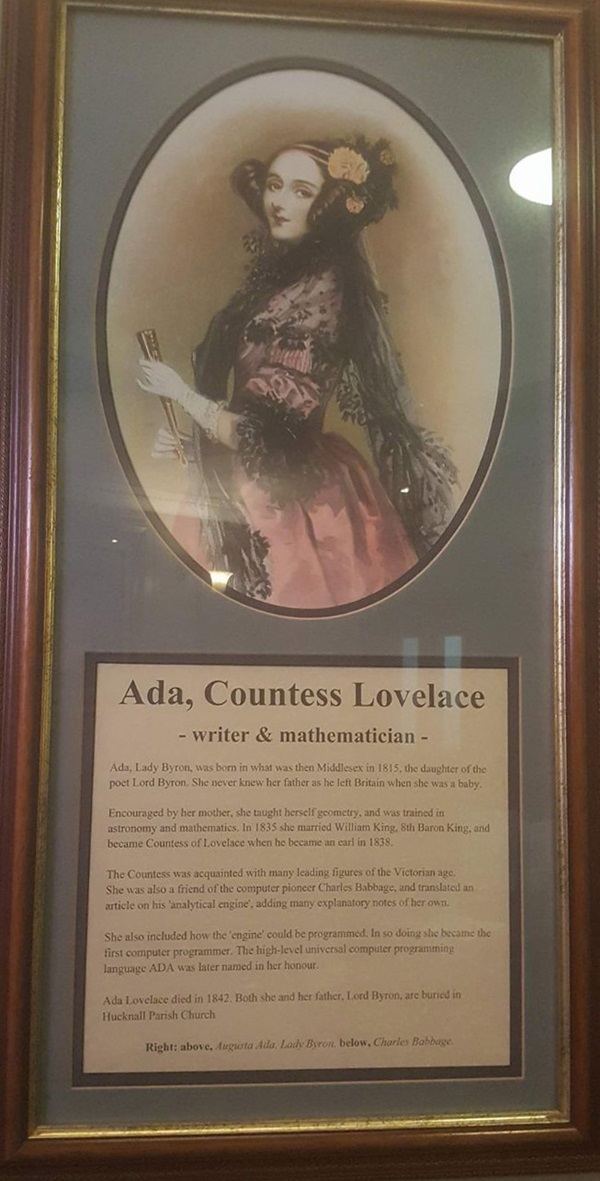
The text reads: Ada, Lady Byron, was born in what was Middlesex in 1815, the daughter of the poet Lord Byron. She never knew her father as he left Britain when she was a baby.
Encouraged by her mother, she taught herself geometry, and was trained in astronomy and mathematics. In 1835 she married William King, 8th Baron King, and became Countess of Lovelace when he became an earl in 1838.
The countess was acquainted with many leading figures of the Victorian age. She was also a friend of the computer pioneer Charles Babbage, and translated an article on his analytical engine, adding many explanatory notes of her own.
She also included how the engine could be programmed. In doing so she became the first computer programmer. The high level universal computer programming language ADA was later named in her honour.
Ada Lovelace died in 1842. Both she and her father, Lord Byron, are buried in Hucknall parish church.
A photograph and text about Zachariah Green.
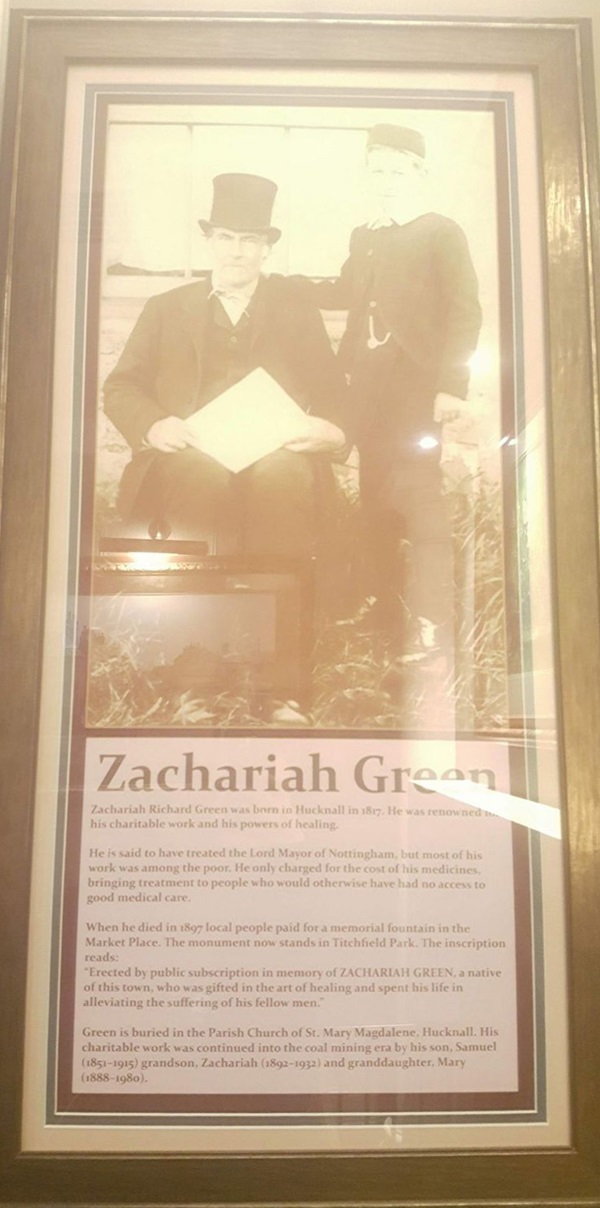
The text reads: Zachariah Richard Green was born in Hucknall in 1817. He was renowned for his charity work and his powers of healing.
He is said to have treated the mayor of Nottingham, but most of his work was among the poor. He only charged for the cost of his medicines, bringing treatment to people who would otherwise have had no access to good medical care.
When he died in 1897 local people paid for a memorial fountain in the Market Place. The monument now stands in Titchfield Park. The inscription reads: “Erected by public subscription in memory of Zachariah Green, a native of this town, who was gifted in the art of healing and spent his life in alleviating the suffering of his fellow men”.
Green is buried in the parish church of St Mary Magdalene, Hucknall. His charitable work was continued into the coal-mining era by his son, Samuel (1851-1915) grandson, Zachariah (1892-1932) and granddaughter, Mary (1888-1980).
Photographs and text about Zachariah Green.
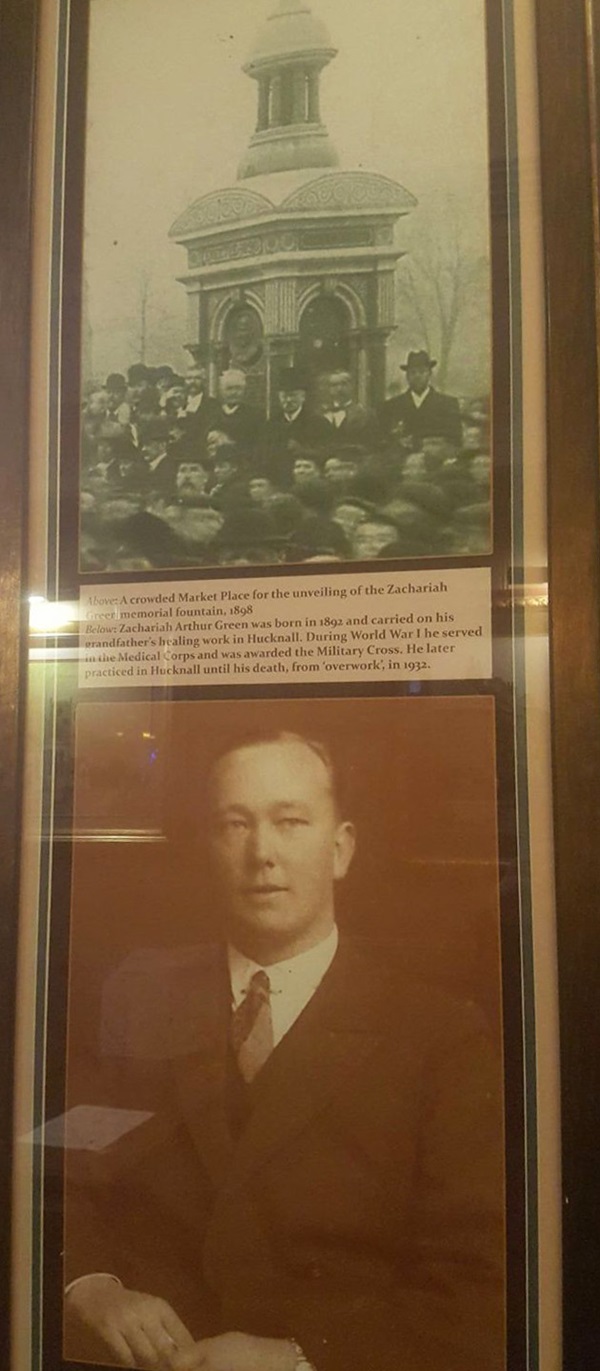
Above: A crowded Market Place for the unveiling of the Zachariah Green memorial fountain, 1898
Below: Zachariah Arthur Green was born in 1892 and carried on his grandfather’s healing work in Hucknall. During World War I he served in the Medical Corps and was awarded the Military Cross. He later practiced in Hucknall until his death, from ‘overwork’ in 1932.
A photograph of Heath Street, Hucknall, c1905.
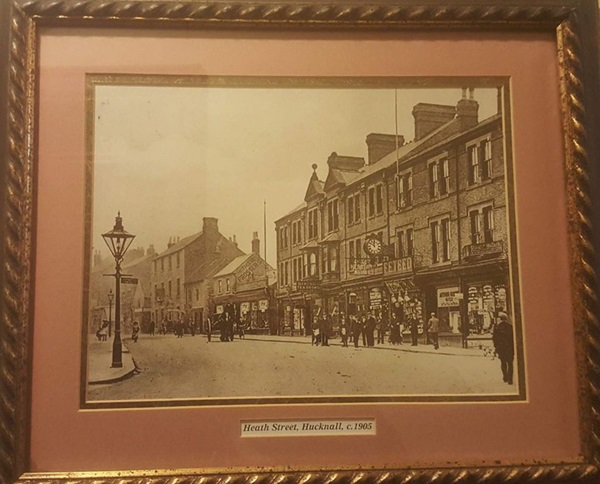
A photograph of Annesley Road, Hucknall, c1903.
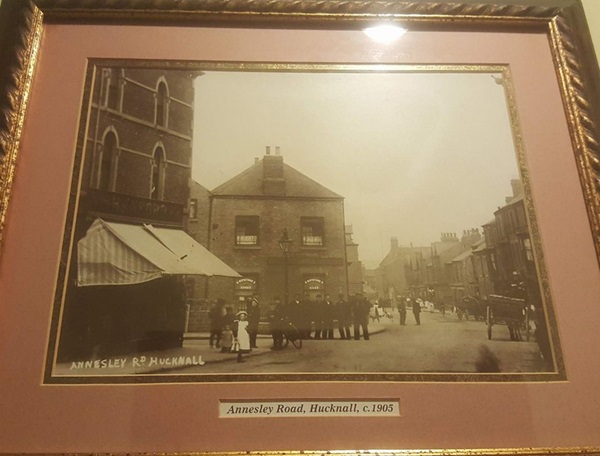
External photograph of the building – main entrance.
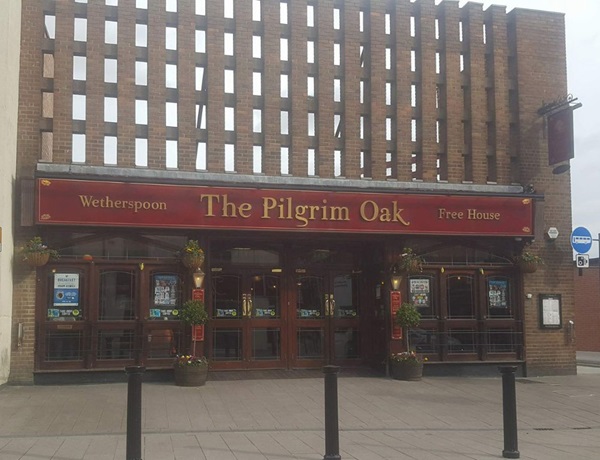
If you have information on the history of this pub, then we’d like you to share it with us. Please e-mail all information to: pubhistories@jdwetherspoon.co.uk